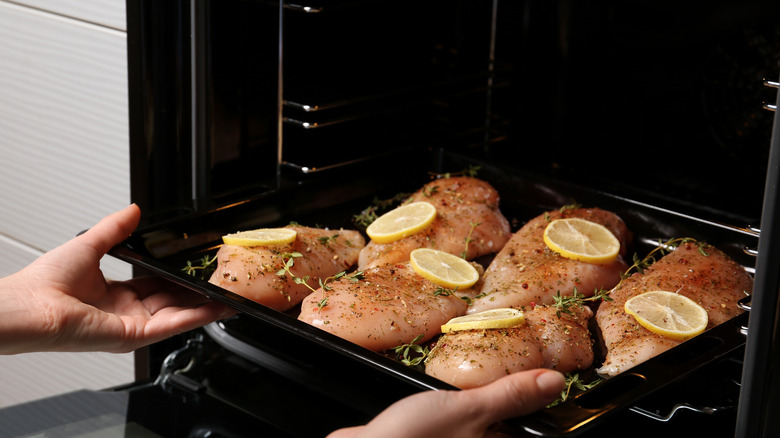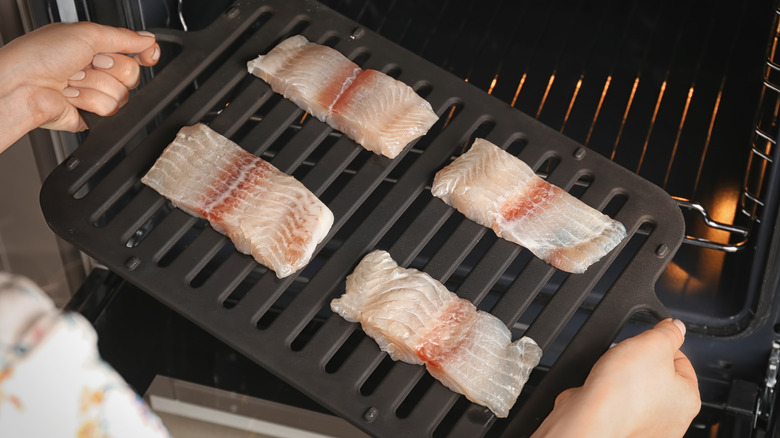The Right Settings To Use When Broiling Different Cuts Of Meat
Those who are apprehensive about using the broiler in an oven are not alone. It can be intimidating to place food directly under the heat source. But if armed with the right knowledge, it's much easier to determine which settings are needed to use for a broiler. Getting to know the broiler settings, indeed, is a key to successfully preparing many cuts of meat.
The settings for broilers differ depending on the oven, but most have one broiler setting: high. It heats the top element of the stove to a set temperature, which can't be changed. Some ovens, however, will come with adjustable high and low settings. The high setting should be used to broil thinner cuts of meat (ones that do well with a good sear on the outside and are just barely finished on the inside), while the lower broiler setting should be used for thicker cuts (those that are best cooked through).
It's a great rule of thumb to follow because it applies to all the different types of meat that can be cooked under the broiler. So, what exactly are the types of meat that work best under the broiler? And how exactly can their cooking be regulated in an oven that doesn't have a high and low setting? Read on for all the details.
Understanding the broiler and what to cook with it
There's a lot that can be cooked with a broiler, from meat and fish, to certain fruits and vegetables. Still, understanding the settings of any particular broiler is essential to knowing what to cook under it.
If a broiler has high and low settings, it can be used for thinner and thicker cuts, respectively. Chicken and streak are two meats often cooked under the broiler. Thinner cuts include chicken cutlets or flak steak, while the thicker cuts include 1 1/2 inch sirloins and plump chicken breasts.
But what if the oven has no heat adjustments? That's when the oven racks become an advantage. A typical broiler will reach a high temperature of 500 degrees Fahrenheit, and the top rack of an oven rests three to five inches from the broiler. Thinner pieces of meat or fish can be placed here. Fish is almost always broiled this way, because the filets are so thin and don't take long to cook. Filets of salmon, tilapia, swordfish, or cod can be broiled quickly without being dried out or burnt.
Don't forget to also take advantage of the second rack in the oven. This will accommodate thicker cuts of meat, those that would be too close to the heat source on the top rack. The middle rack downwards is not suitable for broiling, as it puts the meat too far away.

